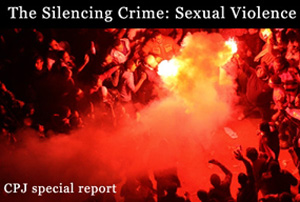
NEW YORK (Committee to Protect Journalists: Pacific Media Watch): Dozens of journalists from all regions of the world are breaking their silence on the sexual aggression they have endured in the course of their work.
Their accounts, detailed in a new report by the Committee to Protect Journalists (CPJ), provide the most extensive documentation gathered thus far on how sexual assault threatens press freedom worldwide.
The report, based on interviews with 27 local and 25 international journalists, reveals a broad range of sexual violence against the press that has gone largely undocumented until now. Many of those interviewed said they kept silent due to cultural stigmas, doubts that authorities would take action, and a reluctance to endanger their professional status or reporting assignments.
"From threats and groping to aggressive physical harassment and rape, these acts not only obstruct the work of journalists but are used as retribution," said CPJ senior editor Lauren Wolfe, author of the report.
"Acknowledging and assessing sexual aggression against journalists is a first step toward formulating solutions and advocating for change. This report is a step in that direction."
CPJ found sexual aggression in reprisal for reporting, mob-related sexual violence while covering events, and sexual abuse of journalists in detention or captivity. These findings, which are being published along with CPJ's new security guidelines concerning sexual aggression, will form the basis for further CPJ research in the coming year.
While most instances of aggression involve women, male journalists have also been targeted, typically in situations of captivity or detention. To help journalists identify and minimise the risk of sexual aggression, CPJ journalist security coordinator Frank Smyth has written an addendum to the organisation's existing journalist security guide.
The new section provides practical guidance on situational awareness and field techniques.



